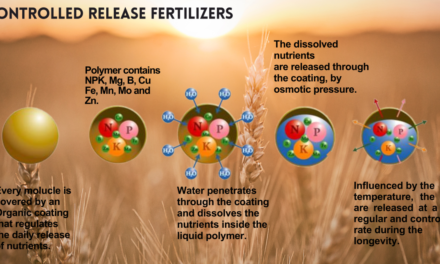Crude oil price fluctuations significantly impact the petrochemical market due to the industry’s heavy reliance on crude oil and its derivatives as feedstocks. These fluctuations influence production costs, profitability, market dynamics, and investment decisions across the petrochemical value chain. Below is an analysis of these impacts:
1. Feedstock Costs
- Direct Impact:
- Crude oil is a primary source of naphtha and other feedstocks used in petrochemical production.
- Higher oil prices increase the cost of naphtha, raising production costs for petrochemicals like ethylene, propylene, and aromatics.
- Conversely, lower oil prices reduce feedstock costs, making petrochemicals more affordable.
- Alternative Feedstocks:
- Price volatility drives shifts between naphtha and alternative feedstocks like ethane or propane, which are derived from natural gas.
- Example: When crude oil prices rise, ethane from shale gas may become a more cost-effective feedstock.
2. Petrochemical Product Pricing
- Price Correlation:
- Petrochemical product prices often track crude oil prices due to their cost structure.
- Volatility in crude prices creates uncertainty in pricing for downstream products like plastics, synthetic fibers, and solvents.
- Price Lag:
- Petrochemical prices do not constantly adjust immediately to crude oil changes, creating temporary imbalances in supply and demand.
3. Profit Margins
- Margin Compression:
- Rapid increases in crude oil prices can compress margins for petrochemical producers if product prices fail to adjust quickly enough.
- Margin Expansion:
- Falling crude prices may allow producers to maintain higher margins if product prices remain stable or decrease at a slower rate.
4. Shifts in Regional Competitiveness
- Feedstock Economics:
- Regions reliant on naphtha (e.g., Europe, Asia) are more sensitive to crude oil price fluctuations than those using ethane (e.g., U.S. and Middle East).
- Example: Low oil prices reduce the cost advantage of ethane-based producers in the U.S., leveling the playing field with naphtha-based producers in Asia.
- Trade Dynamics:
- Crude price fluctuations affect trade flows, with lower prices boosting exports from regions with surplus production capacity.
5. Demand-Side Impacts
- Consumer Spending:
- Low oil prices reduce production costs for end products like plastics, encouraging demand growth in industries like packaging, automotive, and construction.
- High oil prices can dampen demand due to increased costs for end-users.
- Macroeconomic Influence:
- Oil price volatility can affect global economic growth, indirectly impacting demand for petrochemical products.
6. Supply Chain Dynamics
- Inventory Management:
- Fluctuating oil prices influence inventory strategies, with companies stockpiling feedstocks or products during low-price periods.
- Supply Chain Costs:
- Higher oil prices increase logistics and transportation costs, affecting the overall cost structure of petrochemical operations.
7. Investment and Expansion Decisions
- Capital Expenditure:
- Sustained low oil prices discourage investment in naphtha-based petrochemical projects.
- High prices could encourage investments in alternative feedstocks or more efficient technologies.
- Project Delays:
- Price volatility creates uncertainty, leading to delays in large-scale petrochemical investments.
8. Renewable and Circular Economy Trends
- Shift to Alternatives:
- High crude oil prices make bio-based and recycled feedstocks more competitive, accelerating the transition to sustainable petrochemical production.
- Sustainability Investments:
- Companies may invest more in renewable feedstocks and recycling technologies when oil prices are high.
9. Impact on Downstream Industries
- Plastics and Packaging:
- Volatility in crude oil prices affects the cost and supply of raw materials for plastics, influencing industries like packaging, consumer goods, and automotive.
- Textiles:
- Prices of synthetic fibers like polyester and nylon, derived from petrochemicals, fluctuate with crude oil costs.
- Construction:
- Materials like PVC, used in construction, are directly impacted by changes in oil-derived feedstock prices.
10. Strategic Responses to Volatility
- Feedstock Diversification:
- Companies diversify feedstocks to reduce reliance on crude oil and mitigate price volatility.
- Hedging Strategies:
- Petrochemical firms use financial instruments to hedge against crude oil price fluctuations.
- Process Optimization:
- Investing in energy-efficient technologies and flexible production processes to adapt to changing cost dynamics.
Case Studies
- Shale Gas Impact:
- The rise of shale gas in the U.S. provided an alternative to naphtha, reducing the impact of crude oil prices on U.S. ethylene production.
- COVID-19 Price Crash (2020):
- The sharp drop in oil prices during the pandemic caused a significant decline in feedstock costs, benefiting some petrochemical producers but also disrupting global supply chains.
Future Outlook
- Decoupling from Crude Oil:
- As the industry shifts toward renewable feedstocks and circular economy practices, the impact of crude oil prices may diminish over time.
- Global Energy Transition:
- Efforts to decarbonize and diversify energy sources could reduce the petrochemical sector’s vulnerability to oil price volatility.
- Geopolitical Factors:
- Continued geopolitical uncertainties and supply-demand imbalances will likely keep crude oil prices volatile, influencing petrochemical market dynamics.
Conclusion
Crude oil price fluctuations have a profound impact on the petrochemical market, influencing feedstock costs, pricing, profitability, and strategic decisions. While volatility poses challenges, it also creates opportunities for innovation and adaptation. By diversifying feedstocks, investing in sustainability, and optimizing operations, the petrochemical industry can better navigate the uncertainties of crude oil markets.
Hashtags
#OilandGasIndustry #EnergyMarketAnalysis #CommodityPrices #GlobalOilDemand #SupplyandDemand #OilProduction #OilRefining #OilExports #OilImports #EnergyPolicy #OilandGasInvesting #OilandGasNews #EnergySector #OilandGasPrices #OilandGasMarket #CrudeOilSupply #OilandGasExploration #OilandGasTrading #OilandGasEconomy #OilandGasInvestment

















